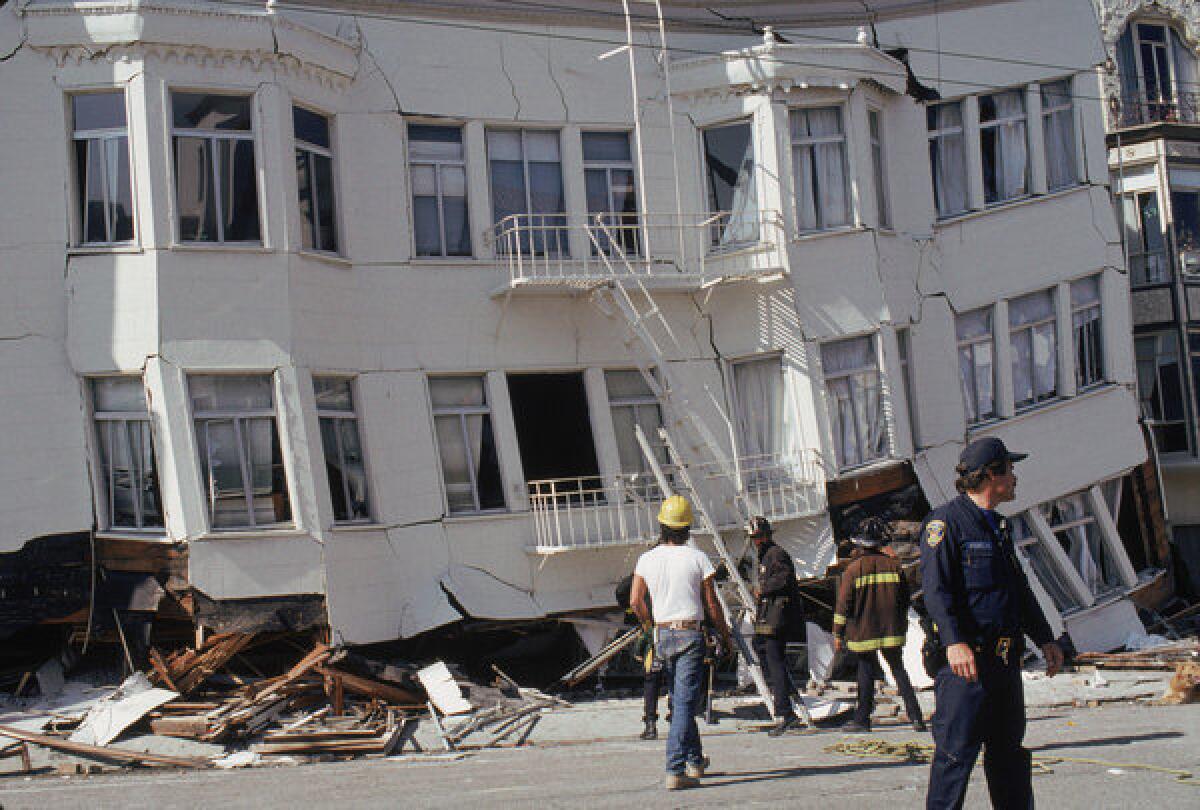L.A. Now Live: Los Angeles learns lessons on quake retrofitting

- Share via
Join us at 9 a.m. when we talk with Times reporter Rong-Gong Lin II about Los Angeles officials considering regulations on so-called soft-story buildings which can collapse during major earthquakes.
In the spring, the San Francisco Board of Supervisors passed legislation requiring owners of soft-story wood-frame apartments to make the structures safer. Now, Los Angeles officials are considering a similar undertaking, but on a much larger scale. San Francisco identified about 3,000 wood-frame apartment buildings that need retrofitting; Los Angeles has many more.
This week, Los Angeles officials are meeting with San Francisco’s earthquake team to get advice on how to proceed in addressing the risks associated with these buildings.
Wood soft-story buildings generally have parking on the first floor supported by weak columns that can collapse during a major earthquake.
San Francisco offers lessons to Los Angeles about the politics of earthquake retrofitting. As in Los Angeles, advocates of new quake safety rules faced heavy opposition from property owners and tenant groups. But they were able to make the case that inaction would be more costly in the long run.
If San Francisco is any indication, Los Angeles may have a long road ahead. The city began to focus on soft-story buildings after many of them collapsed in the Marina district during the 1989 Loma Prieta earthquake. The regulations were finally passed 24 years later.
More to Read
Sign up for Essential California
The most important California stories and recommendations in your inbox every morning.
You may occasionally receive promotional content from the Los Angeles Times.










